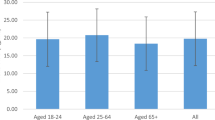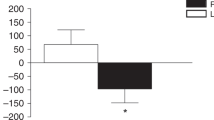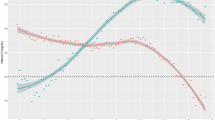Abstract
The effectiveness of a 30-month dietary intervention on vitamin D status of Greek postmenopausal women was examined. Sixty-six postmenopausal women (55–65 years old) were randomized into an intervention group (IG), receiving a daily dose of 7.5 μg of vitamin D3 for 12 months that increased to 22.5 μg for the remaining 18 months of intervention through fortified dairy products and attending nutrition and lifestyle counselling sessions, and a control group (CG). After 30 months of intervention, during winter, serum 25-hydroxy vitamin D (25(OH)D) levels significantly decreased in the CG while remained in the same high levels as in the summer period in the IG. Similarly, at 30 months of intervention the prevalence of vitamin D insufficiency was significantly higher in the CG compared to the IG (60.0 vs 25.0%, P=0.006). In conclusion, the current intervention scheme with a daily dose of 22.5 μg of Vitamin D could significantly decrease the prevalence of vitamin D insufficiency during winter time but not entirely prevent it.
This is a preview of subscription content, access via your institution
Access options
Subscribe to this journal
Receive 12 print issues and online access
$259.00 per year
only $21.58 per issue
Buy this article
- Purchase on Springer Link
- Instant access to full article PDF
Prices may be subject to local taxes which are calculated during checkout

Similar content being viewed by others
References
Calvo MS, Whiting SJ (2003). Prevalence of vitamin D insufficiency in Canada and the United States: importance to health status and efficacy of current food fortification and dietary supplement use. Nutr Rev 61, 107–113.
Calvo MS, Whiting SJ, Barton CN (2005). Vitamin D intake: a global perspective of current status. J Nutr 135, 310–316.
Heaney RP, Davies KM, Chen TC, Holick MF, Barger-Lux MJ (2003). Human serum 25-hydroxycholecalciferol response to extended oral dosing with cholecalciferol. Am J Clin Nutr 77, 204–210.
Manios Y, Moschonis G, Trovas G, Lyritis GP (2007). Changes in biochemical indexes of bone metabolism and bone mineral density after a 12-mo dietary intervention program: the Postmenopausal Health Study. Am J Clin Nutr 86, 781–789.
Moschonis G, Tanagra S, Koutsikas K, Nikolaidou A, Androutsos O, Manios Y (2009). Association between serum 25-hydroxyvitamin D levels and body composition in postmenopausal women: the postmenopausal Health Study. Menopause 16, 701–707.
Mosekilde L (2005). Vitamin D and the elderly. Clin Endocrinol (Oxf) 62, 265–281.
National Institute of Health (1994). NIH Consensus conference. Optimal calcium intake. NIH Consensus Development Panel on optimal calcium intake. JAMA 272, 1942–1948.
Rapuri PB, Kinyamu HK, Gallagher JC, Haynatzka V (2002). Seasonal changes in calciotropic hormones, bone markers, and bone mineral density in elderly women. J Clin Endocrinol Metab 87, 2024–2032.
van der Wielen RP, Lowik MR, van den Berg H, de Groot LC, Haller J, Moreiras O et al. (1995). Serum vitamin D concentrations among elderly people in Europe. Lancet 346, 207–210.
Whiting SJ, Calvo MS (2005). Dietary recommendations for vitamin D: a critical need for functional end points to establish an estimated average requirement. J Nutr 135, 304–309.
Acknowledgements
We thank Eva Grammatikaki, Ioanna Katsaroli and Paraskevi Kannelou, dietitians, as well as Sofia Tanagra, technician, for their valuable contribution in data collection and processing. The study was supported by a research grant from Friesland Foods Hellas. The study sponsor had no role in the study design; the collection, analysis, or interpretation of the data; the writing of the manuscript; the submission and revision of the paper.
Author information
Authors and Affiliations
Corresponding author
Ethics declarations
Competing interests
YM also works as a science and nutrition consultant for Friesland Campina Hellas. None of the other authors had any potential conflict of interest.
Additional information
Contributors: All authors equally contributed to the study design, data collection and management, statistical analysis, interpretation of results and writing of the paper.
Rights and permissions
About this article
Cite this article
Manios, Y., Moschonis, G. & Lyritis, G. Seasonal variations of vitamin D status in Greek postmenopausal women receiving enriched dairy products for 30 months: the Postmenopausal Health Study. Eur J Clin Nutr 65, 412–414 (2011). https://doi.org/10.1038/ejcn.2010.270
Received:
Revised:
Accepted:
Published:
Issue Date:
DOI: https://doi.org/10.1038/ejcn.2010.270



